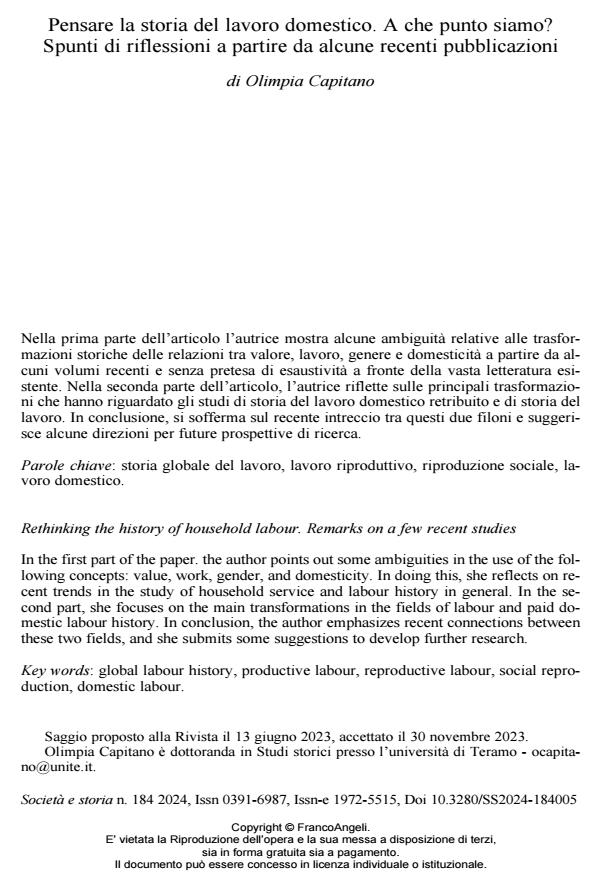Rethinking the history of household labour. Remarks on a few recent studies
Journal title SOCIETÀ E STORIA
Author/s Olimpia Capitano
Publishing Year 2024 Issue 2024/184
Language Italian Pages 17 P. 349-365 File size 209 KB
DOI 10.3280/SS2024-184005
DOI is like a bar code for intellectual property: to have more infomation
click here
Below, you can see the article first page
If you want to buy this article in PDF format, you can do it, following the instructions to buy download credits

FrancoAngeli is member of Publishers International Linking Association, Inc (PILA), a not-for-profit association which run the CrossRef service enabling links to and from online scholarly content.
In the first part of the paper. the author points out some ambiguities in the use of the following concepts: value, work, gender, and domesticity. In doing this, she reflects on recent trends in the study of household service and labour history in general. In the second part, she focuses on the main transformations in the fields of labour and paid domestic labour history. In conclusion, the author emphasizes recent connections between these two fields, and she submits some suggestions to develop further research.
Keywords: global labour history, productive labour, reproductive labour, social reproduction, domestic labour.
Olimpia Capitano, Pensare la storia del lavoro domestico. A che punto siamo? Spunti di riflessioni a partire da alcune recenti pubblicazioni in "SOCIETÀ E STORIA " 184/2024, pp 349-365, DOI: 10.3280/SS2024-184005